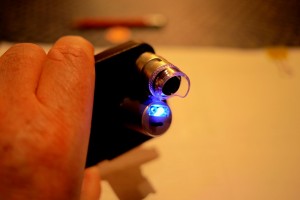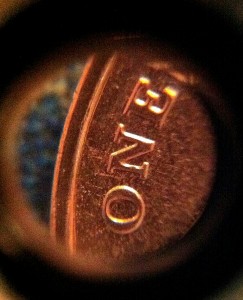
This evening I went to an interesting lecture on “The challenges of regulating the Internet” given by Simon Hampton, who is Google’s Director of Public Policy for Northern Europe. He was, he insisted, speaking only “in a personal capacity” and the audience, for the most part, took him at his word. His thesis was that in the technology business the greatest challenge is “the transition from scarcity to abundance” and that policy-makers haven’t taken this transition on board.
The metaphor he used to communicate abundance was the hoary story of the guy who invents the game of chess and who, when asked by the Emperor what he would like as a reward requests one grain of rice on the first square, two on the second, four on the third, etc. You know the story: according to Hampton by the time you get to the 64th square the amount of rice needed is the size of Everest. At which point my neighbour, David Cleevely, nudged me and said that he had worked it out and it was enough rice to cover the entire surface of the earth to a depth of nine inches! But it turned out that, for Hampton, the metaphor also has a chronological dimension: we’re just about half-way through the chessboard.
As befits someone who spends a lot of time in Brussels arguing with the anti-trust division of the European Commission, he has a pretty jaundiced view about what goes on there. But he made a good point, namely that the EU finds it easiest to regulate in new areas simply because regulating in existing areas means dealing with the reluctance of member states to change their existing laws. The result is that the Commission tends to to move too quickly to legislation (in the form of Directives) in emerging areas. Examples: the e-Money Directive; the e-Signature Directive; and, now, the Privacy Directive. Plus, of course, the idiocy of applying to the Net concepts designed for regulating TV broadcasters.
He then went on to list the four big companies that have “embraced abundance” — Apple, Amazon, Google and Facebook. They all operate on massive scale and have an interest in a bigger, freer Internet — though they have only recently woken up to the necessity of lobbying for this in the corridors of power (which is why the campaign against SOPA was so significant). In this context, Hampton claimed, size really matters — which is why moving into the second half of the chessboard is so significant. “The larger the haystack, the easier it is to find the needle.” (Not sure I followed his logic here.)
He was interesting on the subject of lobbying — which of course is a large part of his job and he defined it as trying to persuade legislators and policy-makers that their concept of the public interest should be realigned with those of industrial lobbies. People in declining industries tend to scream, and thereby gain public — and media and legislators’ — attention; in contrast, people in new, growing industries are too busy getting on with it — which probably explains why the big Internet companies were so slow to get their lobbying act together in Washington.
Finally, Hampton moved to the question of how to rethink policy-making in the context of abundance. In his opinion, there’s no need to change the broad objectives of public policy. The key switch that is needed is for policy-makers to “embrace abundance”.
What would that mean in practice? He suggested three general principles:
Don’t protect industries based on scarcity. This means accepting the two sides of the Schumpeterian wave of “creative destruction”. To date, our legislatures have been hopeless at this: they appear to be mainly preoccupied with enabling the interests of the past to constrain the future.
Work with crowdsourcing. This is an interesting idea. The example Hampton cited involved contrasting the way broadcasting regulators deal with unacceptable content compared with the way YouTube effectively crowdsources the detection of unacceptable content by inviting its users to flag clips that they think are offensive. Also the way eBay engenders trust with its reputation system; or the way TripAdvisor invites its users to “rate the raters”.
Reappraise the power of data. Mining the avalanche of data is, Hampton thinks, the beginning of wisdom in an age of abundance. (Yes, but it raises privacy nightmares.)
In the Q&A the main topics were (a) the cluelessness of legislators in relation to the Internet, and (b) concerns about privacy (hardly surprising given this). I made the point that legislators have always been clueless, so there’s nothing new here. (I quoted Bertrand Russell’s argument about why an MP couldn’t be more stupid than his constituents — “because the more stupid he is, the more stupid they are to elect him”.) The point is that in a representative democracy, Members of Parliament should not be expected to be knowledgeable about everything. It’s Parliament, as an institution, that needs to be knowledgeable — which is why we need evidence-based policy-making in relation to Internet regulation, intellectual property, etc. And, to date, we’ve had very little of that.
So the battle for an open Internet continues.




